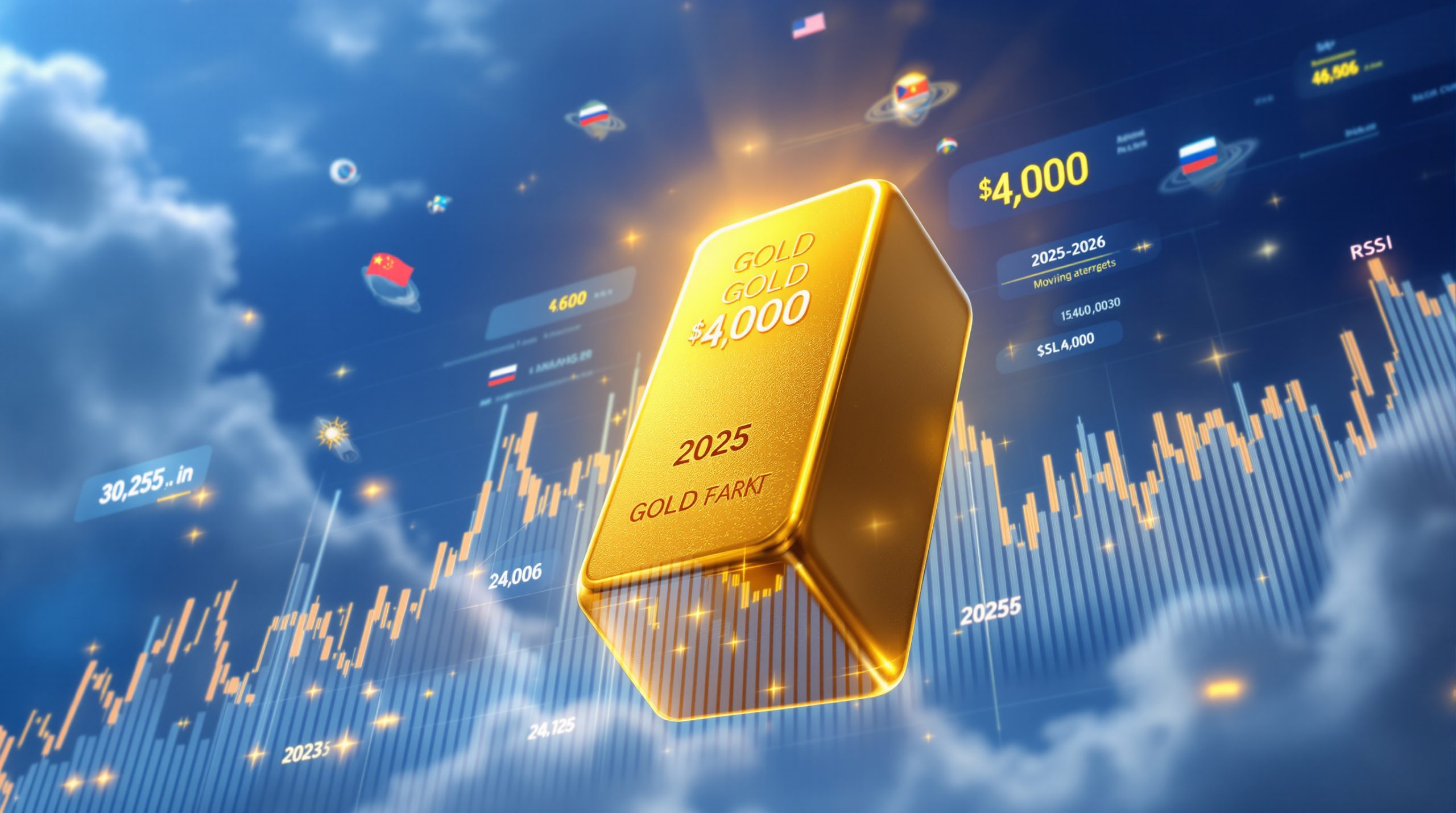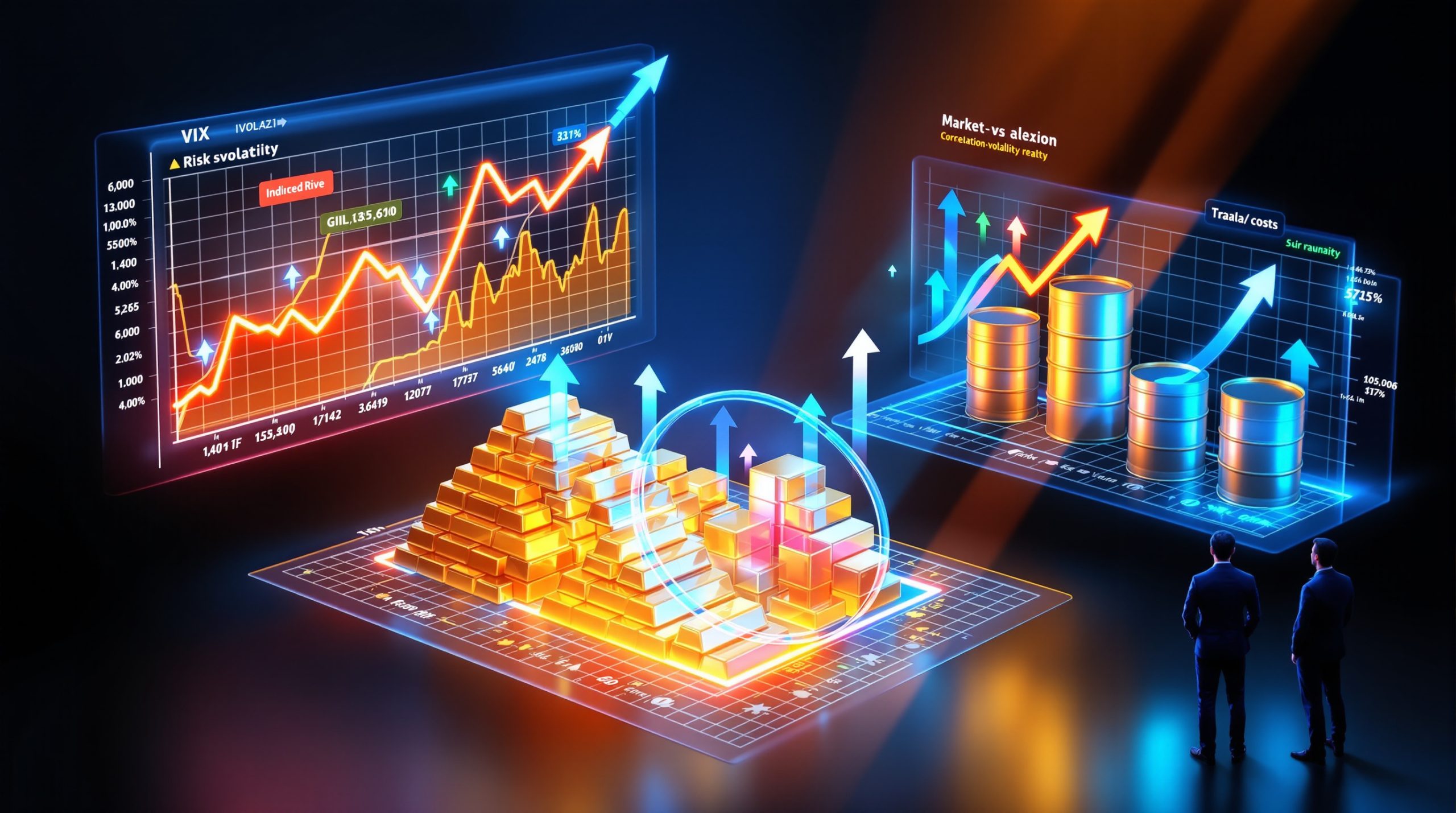What Makes Platinum the Standout Precious Metal of 2025?
Platinum has emerged as 2025's top-performing precious metal, achieving over 30% price growth year-to-date—outpacing even gold's impressive 26% gain according to Kitco Metals' 2025 Precious Metals Quarterly Report. Recent weeks have been particularly remarkable, with prices surging beyond US$1,200 per ounce, reaching a four-year high as confirmed by the London Bullion Market Association. This exceptional performance reflects fundamental shifts in both supply and demand dynamics that savvy investors are increasingly recognizing.
Record-Breaking Performance Metrics
The platinum market's impressive trajectory in 2025 has caught the attention of institutional investors worldwide. While precious metals broadly have performed well amid economic uncertainties, platinum's specific industrial applications have created a unique value proposition driving its outperformance.
"We're witnessing an unprecedented combination of industrial demand growth and investment interest," notes Tre Raymond, WPIC Analyst, during a May 2025 webinar. "The market is finally recognizing platinum's dual nature as both a precious metal and critical industrial material."
Critical Supply-Demand Imbalance
According to World Platinum Investment Council (WPIC) projections in their Q2 2025 Report, this year marks the third consecutive year of significant supply deficits, with an estimated shortfall approaching 1 million ounces. Market analysts forecast this deficit trend continuing for at least two more years, creating sustained upward pressure on prices.
Paul Wilson, WPIC CEO, emphasized in a June 2025 CNBC interview that "auto sector demand will grow 8% annually through 2027," further straining already tight supplies. This structural imbalance represents a fundamental driver behind platinum's outperformance compared to other precious metals.
The supply constraints are particularly notable when examining mining output. According to the U.S. Geological Survey's Mineral Commodity Summaries 2025, approximately 75% of global platinum supply comes from South Africa and Zimbabwe, creating significant geographic concentration risk. Furthermore, South Africa mining opportunities continue to evolve as the nation balances resource extraction with economic development goals.
Dual-Purpose Appeal
Platinum offers investors a unique value proposition through its dual role as both a precious metal and an industrial commodity. While it shares gold's status as a store of value—used in jewelry, investment coins, and as a wealth preservation asset—platinum's industrial applications provide additional demand drivers that gold lacks.
"Investors are diversifying from gold as platinum offers industrial upside that other precious metals simply don't have," explained Jane Fraser of Citi Group in a Financial Times interview from June 2025. This sentiment is increasingly reflected in institutional fund flows, with Goldman Sachs reporting $500 million of inflows to platinum ETFs in Q2 2025 alone.
A particularly compelling aspect of platinum's industrial profile is its essential role in environmental technologies. The International Platinum Group Metals Association reports that platinum catalysts reduce nitrogen oxide (NOx) emissions by up to 90% in diesel engines, making the metal crucial for meeting increasingly stringent global emissions standards.
How Does Platinum Compare to Other Precious Metals?
Platinum vs. Gold: Investment Comparison
While gold has traditionally dominated investor attention in the precious metals sector, platinum's performance metrics in 2025 present a compelling alternative. The contrast between these metals extends beyond simple price comparisons, reflecting fundamental differences in supply dynamics, industrial applications, and investment characteristics.
| Metric | Platinum | Gold |
|---|---|---|
| 2025 YTD Price Growth | >30% | 26% |
| Current Price Level | US$1,200/oz | US$2,400/oz (approx.) |
| Supply Situation | Deficit (3rd consecutive year) | Relatively balanced |
| Industrial Demand | 40% of total demand | 10% of total demand |
| Investment Demand | Growing as alternative to gold | Traditional safe haven |
| 30-Day Volatility Index | 22 | 18 |
Source: WPIC 2025 Data Dashboard, Bloomberg (June 2025)
This volatility difference, while modest, reflects platinum's smaller market size and greater sensitivity to industrial demand fluctuations. However, many analysts view this higher volatility as an opportunity for greater returns in bullish market conditions. In addition, recent gold price analysis 2025 suggests the precious metals sector as a whole remains robust.
Unique Industrial Applications
Unlike gold, platinum serves as an essential component in catalytic converters for vehicles, where it plays a crucial role in reducing harmful emissions. This environmental application creates a steady demand base that remains relatively insulated from economic cycles, particularly as global emissions standards continue to tighten across major markets.
The upcoming Euro 7 regulations, scheduled for implementation in 2026 according to the European Commission, will require 50% stricter NOx limits for vehicle emissions. This regulatory tightening directly translates to increased platinum loadings per vehicle, further supporting demand fundamentals.
Beyond automotive applications, platinum's unique physical and chemical properties make it irreplaceable in various high-tech applications. The metal's exceptional resistance to corrosion, high melting point (1,768°C), and catalytic properties secure its position in medical devices, electronics, and emerging hydrogen technologies.
"Platinum's density—60% greater than gold—impacts everything from jewelry design to industrial applications," notes the Platinum Guild International in their 2024 market review. "This physical property, combined with its extraordinary resistance to corrosion, ensures platinum remains essential across diverse industries."
What's Driving Platinum's Price Surge in 2025?
Geopolitical Factors and Trade Tensions
The implementation of new tariff policies following "Liberation Day" (April 2, 2025) has significantly impacted metal markets. The 10% tariff on imported metals, as reported by Reuters in March 2025, prompted metal dealers to proactively purchase platinum in bulk anticipation of these trade restrictions.
This preemptive action created temporary supply bottlenecks, with the U.S. Commerce Department reporting a 15% month-over-month import surge immediately prior to Liberation Day. Ironically, some of this stockpiled platinum is now re-entering the market, demonstrating the complex interplay between trade policy and commodity prices. The broader tariffs impact on markets continues to shape investment strategies across multiple sectors.
Adding to these supply constraints, Zimbabwe's Ministry of Finance implemented a 5% export levy on raw platinum in 2024, designed to encourage domestic processing. This policy shift has further complicated the global supply picture, particularly given Zimbabwe's position as the world's second-largest platinum producer.
Investment Demand as Gold Alternative
As gold prices have reached historic highs of approximately US$2,400 per ounce, investors seeking precious metal exposure have increasingly turned to platinum as a relatively undervalued alternative. This shift in investment sentiment has contributed significantly to platinum's price momentum, with institutional investors particularly active in building positions.
Goldman Sachs noted in their June 2025 Commodities Update that "institutional inflows into platinum ETFs hit $500M in Q2 2025," representing one of the strongest quarterly inflows on record. This investment interest reflects growing recognition of platinum's fundamental value proposition at a time when gold appears fully valued by historical metrics.
The platinum-to-gold ratio, which measures how many ounces of platinum can be purchased with one ounce of gold, has normalized from historically low levels seen in 2023-2024. This ratio reversion has attracted value-oriented investors seeking mean reversion opportunities in the precious metals space.
Limited Mining Production
Unlike gold, which has numerous global production sources, platinum mining is highly concentrated geographically, with South Africa and Zimbabwe dominating global output. This concentration creates potential supply vulnerabilities that market participants are increasingly factoring into pricing models.
Production challenges in South Africa, including persistent electricity supply disruptions and labor disputes, have constrained output growth despite rising prices. Industry analysts estimate that bringing significant new platinum production online requires sustained prices above US$1,300 per ounce to justify the substantial capital investments required.
The recycling market, which typically provides about 25% of annual platinum supply according to the WPIC 2024 Sustainability Report, has been unable to fully compensate for primary production shortfalls. This recycling limitation further tightens the overall supply picture, as platinum's industrial applications often involve multi-year or even multi-decade product lifecycles before recycling becomes possible.
Which ASX-Listed Companies Offer Platinum Exposure?
Major Australian Platinum Projects
While Australia isn't traditionally known for platinum deposits, several ASX-listed companies offer investors exposure to this high-performing metal through significant development projects and operating mines.
Chalice Mining (ASX:CHN)
Chalice's Gonneville/Julimar deposit represents Australia's most significant platinum group elements (PGE) resource. The July 2023 resource estimate, as detailed in their ASX announcement on July 15, 2023, indicates:
- 560Mt at 0.54% nickel or approximately 1.7g/t palladium equivalent
- 55% classified as Measured and Indicated resources
- Total resource containing 16Moz of 3E (Palladium, Platinum and Gold)
- Additional 860kt nickel, 520kt copper and 83kt cobalt
This polymetallic nature provides investors with exposure to multiple commodities, potentially reducing risk through diversification. However, the project's scale also presents significant development challenges.
Despite seeing its market capitalization retreat from $1.5 billion to approximately $500 million, Chalice remains positioned to benefit from rising platinum prices. The project faces several key challenges including:
- Estimated development costs between $1.6-2.3 billion according to their December 2024 Definitive Feasibility Study
- Final investment decision still approximately 12 months away
- Local community concerns regarding environmental impact, as documented in Western Australia EPA Public Submissions in 2024
Environmental permitting has proven particularly challenging, with conservation groups expressing concerns about the project's proximity to nature reserves. These regulatory hurdles highlight the increasing importance of mine reclamation innovation in securing project approvals and maintaining social license to operate.
Pure-Play Platinum Producers
Zimplats (ASX:ZIM)
As a $1.8 billion market cap producer with operations in Zimbabwe, Zimplats represents one of the few pure-play platinum investments on the ASX:
- Share price has appreciated 28% in 2025
- Production reached 645,911 ounces in FY24 according to their September 2024 Annual Report
- Currently transitioning to a new mine (Mupani) to replace two existing operations
- FY24 profit was modest at US$8.2 million, but 2025's higher platinum prices could significantly improve financial performance
The company's March 2025 Investor Presentation highlighted the US$400 million development cost for the Mupani Mine, which will serve as a replacement for aging operations at Rukodzi and Ngwarati. This capital investment demonstrates the substantial financial requirements for maintaining—let alone expanding—platinum production.
Zimplats faces unique challenges operating in Zimbabwe, including currency controls and the aforementioned 5% export levy on unprocessed platinum. However, the company's established operations and infrastructure provide investors with immediate exposure to platinum price movements.
Southern Palladium (ASX:SPD)
This emerging player is advancing a South African platinum project with promising economics:
- Recently completed Pre-Feasibility Study (PFS)
- Maiden Ore Reserve of 6.29Moz of 6E (platinum plus five other platinum group elements)
- Project Net Present Value (NPV) estimated at US$1 billion
- Internal Rate of Return (IRR) of 28%
- Recently secured environmental authorization
- Successfully raised $8 million to accelerate Definitive Feasibility Study (DFS)
Southern Palladium's Bengwenyama project benefits from its location on the Eastern Limb of South Africa's Bushveld Complex, a region known for higher platinum-to-palladium ratios compared to Western Limb operations. This geological advantage may prove particularly valuable if platinum continues to outperform palladium.
How Can Investors Gain Exposure to Platinum?
Direct Investment Options
Investors seeking platinum exposure have several options beyond equities:
-
Physical platinum – Coins and bars are typically available through precious metal dealers, with the most common investment products being:
- American Platinum Eagle (1 oz)
- Canadian Platinum Maple Leaf (1 oz)
- Various platinum bars from refiners like PAMP Suisse and Valcambi
-
Platinum ETFs – Exchange-traded funds that track the platinum price offer convenient exposure without the storage and security concerns of physical metal. Leading options include:
- Aberdeen Standard Physical Platinum Shares (PPLT), which holds approximately 450,000 ounces according to FactSet data from June 2025
- iShares Physical Platinum ETC
- Wisdomtree Physical Platinum
-
Futures contracts – For sophisticated investors comfortable with derivatives, the CME Group offers platinum futures contracts with average daily trading volume of approximately 10,000 contracts according to CME Data for Q2 2025. These instruments provide leveraged exposure but require careful risk management.
Risk Management Considerations
When considering platinum investments, several risk factors should be evaluated:
- Concentration risk – Limited number of pure-play companies
- Geographic risk – Production concentrated in southern Africa, with associated political and operational uncertainties
- Development risk – For pre-production companies like Southern Palladium
- Capital intensity – High development costs (as seen with Chalice Mining's estimated A$2.3 billion capex)
- Commodity price volatility – Despite strong performance, platinum prices can be volatile, with a 30-day volatility index of 22 compared to gold's 18, according to Bloomberg data from June 2025
"Platinum's smaller market size relative to gold means price movements can be more pronounced in both directions," cautions a recent J.P. Morgan commodities research note. "Investors should size positions accordingly."
Diversification Strategies
Rather than making concentrated bets on individual platinum stocks, investors might consider:
- Allocating a smaller portion of a broader precious metals portfolio to platinum
- Using ETFs to gain diversified exposure across the platinum supply chain
- Combining producers, developers, and exploration companies to balance risk profiles
- Implementing dollar-cost averaging strategies to mitigate entry point risk, particularly given platinum's volatility
For investors primarily concerned with portfolio diversification benefits, platinum ETFs typically offer the most efficient exposure. The correlation between platinum and broader equity markets has historically been lower than for many other commodities, potentially enhancing portfolio diversification. Additionally, those seeking broader metals exposure should consider various investment opportunities 2025 within the resources sector.
What's the Outlook for Platinum Beyond 2025?
Supply Projections
The World Platinum Investment Council forecasts continued supply deficits for at least the next two years, suggesting sustained price support. Limited new projects entering production further constrains supply growth potential, with most major producers focusing on maintaining rather than expanding output.
South Africa's persistent electricity challenges, which have plagued the mining sector for years, show few signs of immediate resolution. These infrastructure limitations create a natural ceiling on production growth even as prices rise, potentially extending the deficit period beyond current projections.
Recycling volumes are expected to increase in response to higher prices, but this secondary supply source remains constrained by the long lifecycle of many platinum-containing products. Unlike gold, where recycling can quickly respond to price increases, platinum recycling faces structural limitations.
Demand Catalysts
Several factors could drive increased platinum demand:
- Continued adoption of stricter vehicle emissions standards globally, with the European Commission's Euro 7 regulations requiring 50% stricter NOx limits by 2026
- Potential applications in hydrogen fuel cell technology, with the Hydrogen Council's 2024 Report projecting that fuel cells could consume 3 million ounces annually by 2030
- Growing investment demand as an alternative to gold
- Recovery in global automotive production volumes
The hydrogen economy represents a particularly intriguing long-term demand driver. Anglo American announced in January 2025 a pilot project utilizing platinum catalysts in hydrogen fuel cells for mining vehicles, potentially creating an entirely new demand category.
However, technological disruption risks also exist. BMW's May 2025 press release regarding research into catalyst-free hydrogen engines highlights ongoing efforts to reduce or eliminate platinum dependency in future technologies.
Price Targets
While specific price predictions are inherently uncertain, the fundamental supply-demand imbalance suggests continued support for platinum prices. The metal's recent break above the psychologically important US$1,200/oz level could pave the way for testing previous highs near US$1,500/oz if current market conditions persist.
Several leading investment banks have revised their price targets upward in recent months:
- Goldman Sachs: US$1,450/oz (12-month target)
- Bank of America: US$1,350/oz (year-end 2025)
- Citi: US$1,500/oz (2026 forecast)
Ready to Capitalise on the Next Mineral Discovery?
Discover potential investment opportunities in the precious metals sector with Discovery Alert's proprietary Discovery IQ model, which instantly identifies significant ASX mineral discoveries and transforms complex data into actionable insights. Explore historic returns from major discoveries by visiting our dedicated discoveries page and begin your 30-day free trial today.




